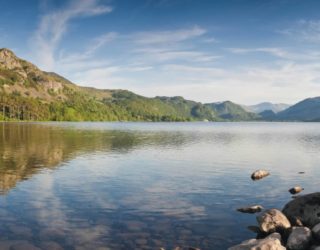Alien species are those that are not native to an area and are a serious threat to global biodiversity, alongside over-exploitation and habitat loss.
Many alien species become part of the background flora and fauna, while others dominate native species, significantly altering community structure and ecosystem function and, at the most extreme, causing extinction. They can also have a significant impact on local and national economies.
Thomson Ecology regularly comes across these species and sees the destruction that they cause. We have recently reported on the top 5 alien marine species which are likely to invade British shores, but here are the top 5 species which are already present in UK waters and on our coastlines, and are quickly establishing themselves.
Chinese mitten crab (Eriocheir sinensis)
The furry-clawed Chinese mitten crab originates in Asia and is thought to have come to this country in ships’ ballast water. They have made significant progress from the sea and are now present in some UK rivers. The mitten crab has a body about the size of the palm of a hand with legs twice the length of its body. It is a burrowing crab and can be highly destructive, causing damage to fishing gear, river banks, and modifying natural habitats. It competes with native species such as the white-clawed crayfish . It is this ecological and economic damage which makes this crab so unwelcome.
Japanese skeleton shrimp (Caprella mutica)
The Japanese skeleton shrimp grows to about 5 cm in length and is an aggressive and highly competitive species, outcompeting the native UK shrimp species (Caprella linearis). It has been introduced to British waters through ballast water or as a fouling organism on ships’ hulls. The Japanese skeleton shrimp is most commonly found on man-made structures such as buoys, pontoons, ropes and boat hulls. They have been recorded blocking water intakes for the feeding systems at fish farms and settling on mussel lines, displacing juvenile mussels, and therefore having an economic impact on coastal businesses.
Carpet sea squirt (Didemnum vexillum)
Another import from Asia, and most likely arriving as a passenger on ships’ hulls, the carpet sea squirt can spread rapidly and aggressively – and as its name suggests – forms a ‘carpet’ on hard surfaces. This ‘carpet’ can change the nature of the seafloor community – smothering, and causing a marked decrease in, native benthic organisms such as sea snails, limpets, and anemones. It also exudes a toxic substance which discourages predators and prevents the larvae of other species from settling on it.
Leathery sea squirt (Styela clava)
The leathery sea squirt has a tough brown surface, and can grow up to 20 cm. Native to the North West Pacific, it was introduced to Britain and Europe as a passenger on ships’ hulls.
Its population is growing fast in the UK, with its ability to withstand salinity and temperature fluctuations allowing it to establish easily wherever introduced. It can reach extreme densities and out-compete native organisms for food. It also feeds on the larvae of native species causing a decline in their population. It colonises ropes, buoys and moorings by smothering existing organisms, and prevents the settlement of oysters and mussels.
Wireweed (Sargassum muticum)
Wireweed is another invasive species which originated in the Pacific, and has spread to Britain from France. It grows very fast, out-competing native seaweeds and seagrasses, reducing diversity. It forms dense stands, reducing light and increasing sedimentation, and impairing recreational activities. It is considered a nuisance in harbours, and can also foul commercial oyster beds and fishing gear. Its removal from commercial and recreational areas can have a significant positive economic impact on businesses.
Advice from the UK Government is to take measures to prevent the introduction and spread of invasive species as, once a species is established, there is no guarantee it can be eradicated. Recording the introduction of these species is important so coastal and marine businesses can be alerted and measures can be put in place to prevent settlement and to minimise economic costs. Recording sightings of these species will also allow government organisations, such as Natural England and Defra, to put in place measures to prevent the spread of these species at a national scale and protect our native environment.
The Non-Native Species Secretariat (NNSS) has responsibility for helping coordinate the approach to invasive non-native species in Great Britain. The NNSS publishes Species Alerts for high risk species and also provides a central site where you can record sightings of invasive species.
http://www.nonnativespecies.org/factsheet/factsheet.cfm?speciesId=1379
http://mittencrabs.org.uk/distribution
http://www.nonnativespecies.org/factsheet/factsheet.cfm?speciesId=647
http://www.nonnativespecies.org/factsheet/factsheet.cfm?speciesId=1209
http://www.nonnativespecies.org/factsheet/factsheet.cfm?speciesId=3430
http://www.nonnativespecies.org/factsheet/factsheet.cfm?speciesId=3141
http://www.nonnativespecies.org/home/index.cfm
Image: Caprella mutica by Hans Hillewaert










